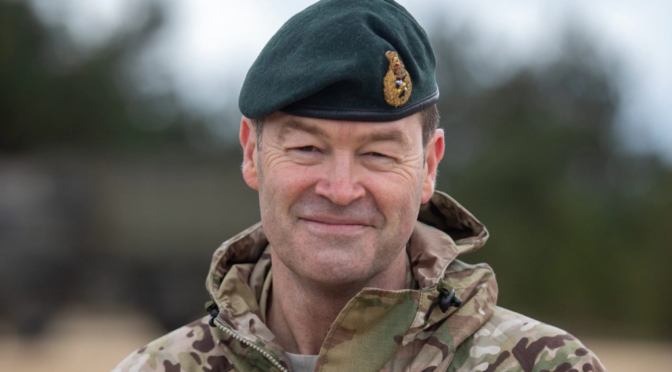Article published in The Daily Telegraph, 30 June 2023. © Richard Kemp
Last week the deputy commander of Nato, British General Sir Tim Radford, complained that our army is too small and now the Chief of the General Staff, Sir Patrick Sanders, is saying the same thing. They could not be more right. The British Army has been continuously run down for decades, with regular forces slashed from 97,000 to 76,000 in the last 10 years and another 3,000 slated to follow them out of the door. Tank numbers are being cut by a third from an already derisory 227 to just 148 and tracked armoured infantry fighting vehicles got rid of altogether.
Sanders compared this dire situation with British military neglect in the 1930s, but it is far worse than that. By the time Hitler unleashed his blitzkrieg in Poland, our political leaders had woken up and were frantically re-arming. Now, in the face of the worst European war since 1945, with every other Nato member building its forces, Britain dementedly continues to cut.
Numbers are not everything, but if it were not already obvious, the Ukraine war has again demonstrated the supremacy of mass – in men, tanks, guns, planes and artillery. Bakhmut, the most intensive battle in Europe since the Second World War, with powerful Ukrainian forces defeated after months of combat, is a case in point. Commanders who were fighting there told me how sheer numbers of men, armoured vehicles and above all an endless stream of artillery shells had prevailed. Despite superior Ukrainian battle tactics, leadership, morale, surveillance, intelligence and cyber, brute force – as always in war – won the day.
That sort of thinking went out of fashion years ago in an increasingly woke Whitehall, with too much emphasis on so-called ‘soft power’, humanitarian aid, peacekeeping, propping up the NHS, environmentalism and mentoring other people’s armies rather than the dirty business of mud, blood and violence. That helped influence the prioritisation of nice clean fighting tools like cyber, robotics and IT above infantrymen, tanks and shells. Although themselves still woefully underfunded, the RAF and the Navy, supremely usable without getting embroiled in a messy fight on the ground, were also prioritised.
Just before Putin launched his tanks across the border last February, Prime Minister Boris Johnson told the House of Commons Liaison Committee: ‘We have to recognise that the old concepts of fighting big tank battles on the European land mass … are over and there are other better things that we should be investing in.’He meant cleaner technology and he was not speaking off the cuff but reflecting judgements inside the Ministry of Defence.
But defence priorities weren’t driven by a politically correct misunderstanding of modern warfare alone, they were also motivated by fear. The quagmires in Afghanistan and Iraq traumatised a generation of political leaders and continue to do so. Unwilling to send in adequate resources, they were unable to influence events on the ground driven by an incomprehensible enemy, yet could find no honourable way out. So the unspoken mantra became ‘never again’. The thinking was, next time America comes knocking at our door we must be able to say ‘we’d love to send an armoured division to join you but we don’t have one’. And that is where we find ourselves today, with an army that is unable to deploy a division and might just about be able to muster a single fighting brigade.
In a speech this week, Sanders said that Ukraine’s fight is buying us time to rebuild our own army. For over a year that time has been squandered as we continue to do the opposite. We don’t know how the war in Ukraine will work out, but we do know that the threat from Russia will not evaporate. Nor will the threat from Putin’s allies China, Iran and North Korea, all of which will drag us in if they materialise into military action. That will be less likely if Britain and our allies have hard combat power as well as the demonstrable political will to use it, in other words: deterrence.
To achieve that our leaders need get over post-Afghanistan timorousness, boost defence spending and completely rethink the most recent defence prioritisations.
Image: General Sir Patrick Saunders. Source: Wikimedia Commons

